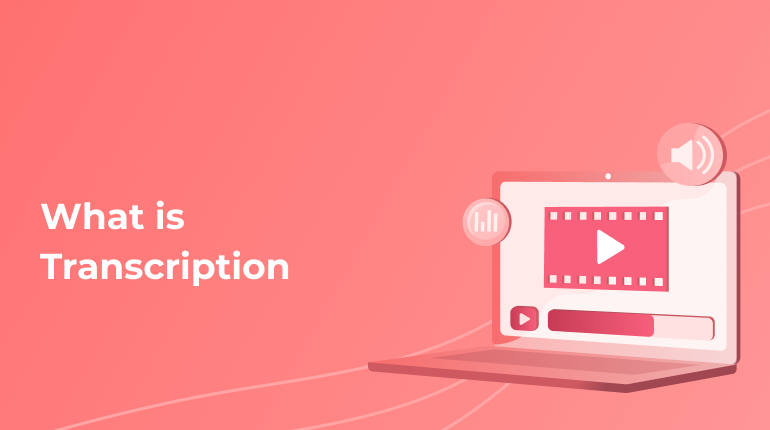What Is Transcription: Main Varieties and Programs Used

The presentation or decoding of any audio and video material in text form and the subsequent editorial processing of the received text material to remove ‘parasite words,’ repetitions, etc., is called transcription. Transcription is also a profession that involves a person who is engaged in transcription. Specialists in this field are usually needed by a variety of companies dealing with large amounts of audio and video data such as phone calls, CCTV footage, seminars, interviews, or more. Workers in this profession will be useful for journalists, writers, and information businessmen.
Basic Types of Transcription
Conditionally, transcription can be divided into the following types: interviews, wiretaps, dictations, subtitles, lectures, and webinars.
Interview
An interview is a conversation between two people (for example, a journalist and a respondent), in which case it is usually not necessary to decipher the journalist’s questions. Interviews are usually recorded on a dictaphone, and even modern budget dictaphones have a high-quality sound recording.
In this case, TV channels and production studios need a transcription. According to the rules, interview footage is divided into synchronous, i.e., separate fragments. The transcriber’s task is not only to write down the words but also to indicate the interviewer’s main emotions. They are usually given in parentheses, for example, crying, rejoicing, smiling, etc. The time code is also provided in the document. A time code is a timestamp presented in a specific format inserted into the transcription text. Time codes are used to compare and synchronize the received text with the input audio or video. Time codes are also used to mark places that could not be understood and analyzed due to obstacles, poor recording quality, etc.
Wiretapping
In this case, the sound is recorded on a hidden voice recorder. The recording quality is usually low and requires high transcriber skills. As practice shows, journalists often need these services. Studios that do not produce documentaries work on research broadcasts or are simply engaged in making daily news broadcasts and regularly use such services. By applying for a downloaded version or online program, the perception of unique recordings from wiretapping, telephone conversations, surveillance cameras, etc., is greatly simplified. As a rule, this is a conversational structure of speech.
Dictations
Dictation is when the author of a letter, book, newspaper article, etc., reads his manuscripts on a Dictaphone in a measured, clear, and distinct manner. Lectures differ from dictation in the speed of the speaker’s speech.
Subtitles for Movies or Videos
In this case, it is necessary not only to present the language (or sometimes even some sound effects for people with hearing impairments) in text form and to make a special timestamp format (time codes) to start and end each phrase or sound.
It is available here not to provide all data but to receive the main essence. It is essential that the subtitle text fully corresponds to what is said at a certain moment.
Lectures and Webinars
It is often quite difficult to perceive lectures and webinars by ear, so the academic transcription of audio to text is simply irreplaceable here. However, not all content can be specified, but only key aspects:
- Terms and concepts;
- Figures and formulas;
- Stages;
- Principal points, etc.
Thanks to transcription, a person can at any time view the necessary video line in the player and not only view but also see the text, which significantly increases the chances of memorizing the material.
Transcription Programs
Initially, audio-to-text transcription was carried out only in manual mode. Over time, automatic transcription became available, paid and free online services began to appear, as well as various programs to facilitate human work. Modern transcription programs can be paid or free, online or desktop, designed for PCs or smartphones. There are also some that have built-in grammar and punctuation checking. Read more about each type of program below.
Text Editors
Today, many text editors can help make transcription faster and easier. One of the more popular programs is Express Scribe. Drag the audio file into the upper field, play it using a pause, and write the lower window’s heard text. For the convenience of using this editor, hotkeys are provided. The finalized version is usually saved automatically.
Multimedia Programs
Multimedia programs are usually used by professionals in this field since a certain fee for services is required. Among them, there are more accessible ones, such as LossPlay, which has a built-in timecode function. It is possible to use separate players and type text in an open document.
Online Helpers
Today, the Transcriberry service is quite popular. It offers users the ability to get both manual and automatic audio-to-text transcription. The service works best through the Google Chrome browser.

Pros and Cons of Audio to Text Transcription
A significant advantage of using transcription services is to improve the performance of the channel or site. But there are also some weaknesses in the process. For a clear comparison, the pros and cons of various methods of converting audio and video files into the text are clarified below.
Manual Conversion Method
Pros:
- Attracting a person allows you to achieve a high level of attentiveness to the text;
- Additional literacy testing through editors.
Minuses:
- Additional time to work on the audio fragment;
- Slurred and quiet speech is not always recognized with high quality;
- Requires good knowledge of the language.
Programmed (Automated) Method
Pros:
- High speed of audio file processing;
- Doesn’t require particular knowledge of grammar, vocabulary, punctuation, etc.
Minuses:
- Proofreading of the final version may be needed.
Mixed Mode
Pros:
- Provides average audio file recognition speed;
- High-quality finished material.
Minuses:
- It takes a certain amount of time;
- Doesn’t rule out error;
- Good knowledge of a particular language is necessary.
In this article, you received important information about what transcription is, what are its basic types, what software can simplify the work, and the pros and cons of each transcription method. Apply the knowledge gained in practice!